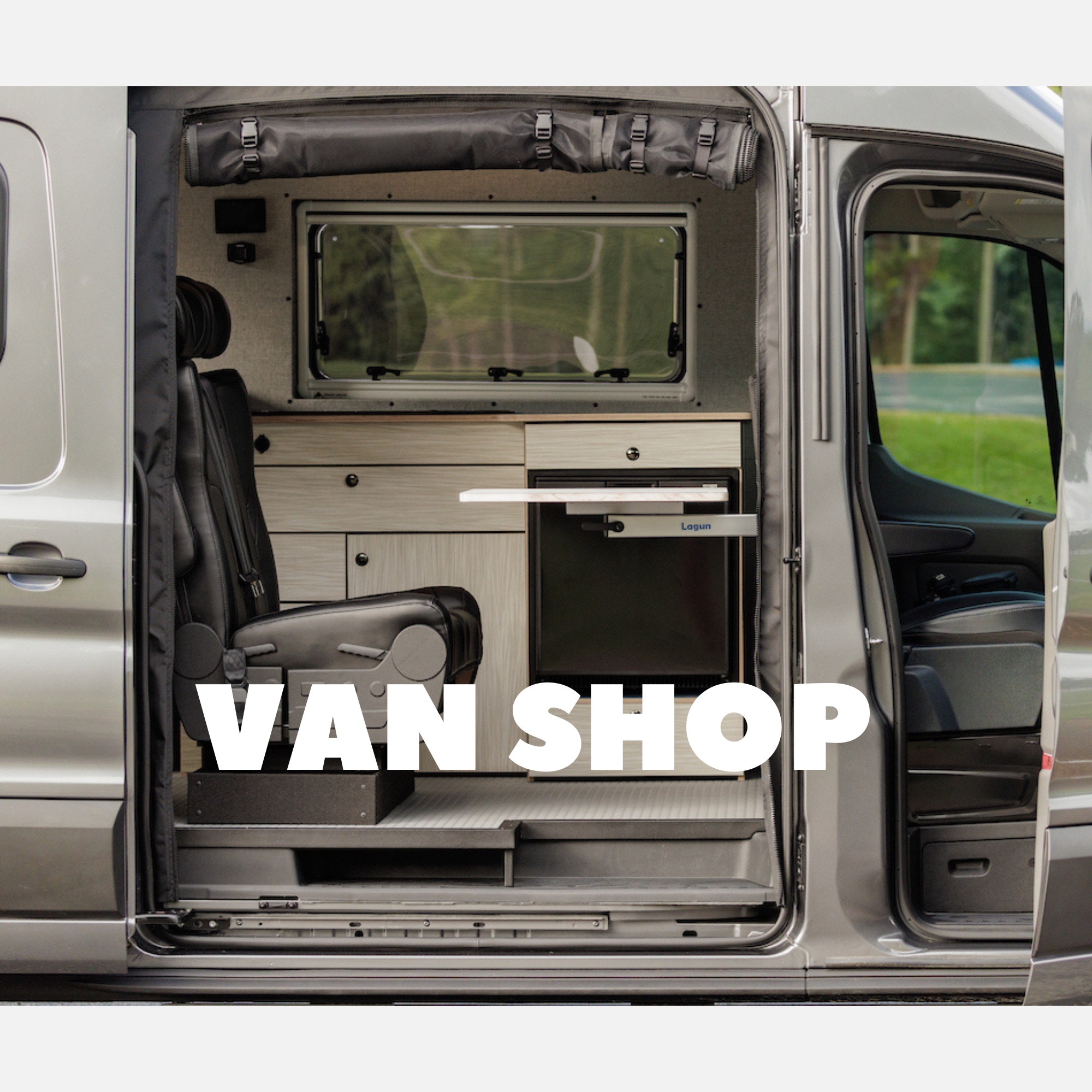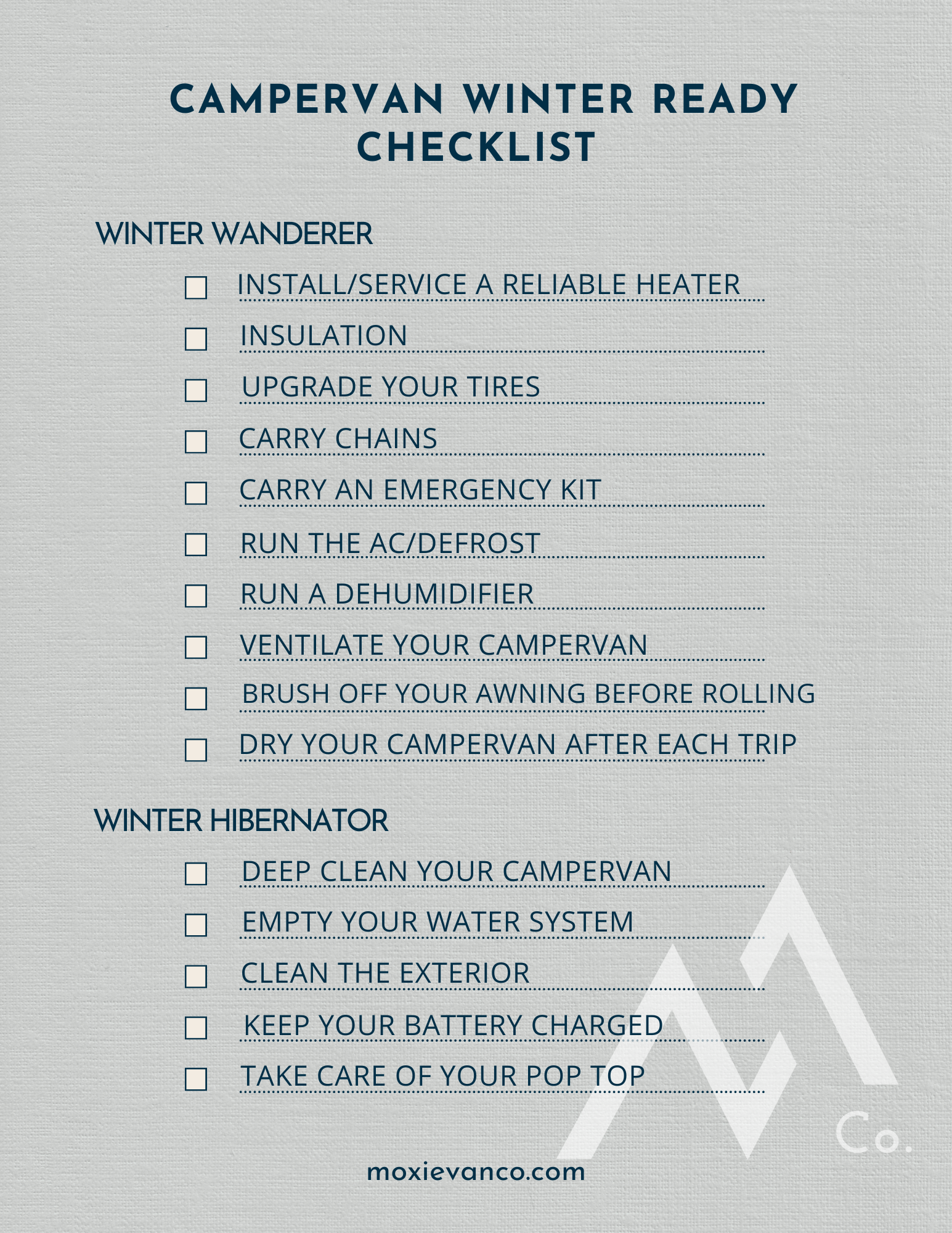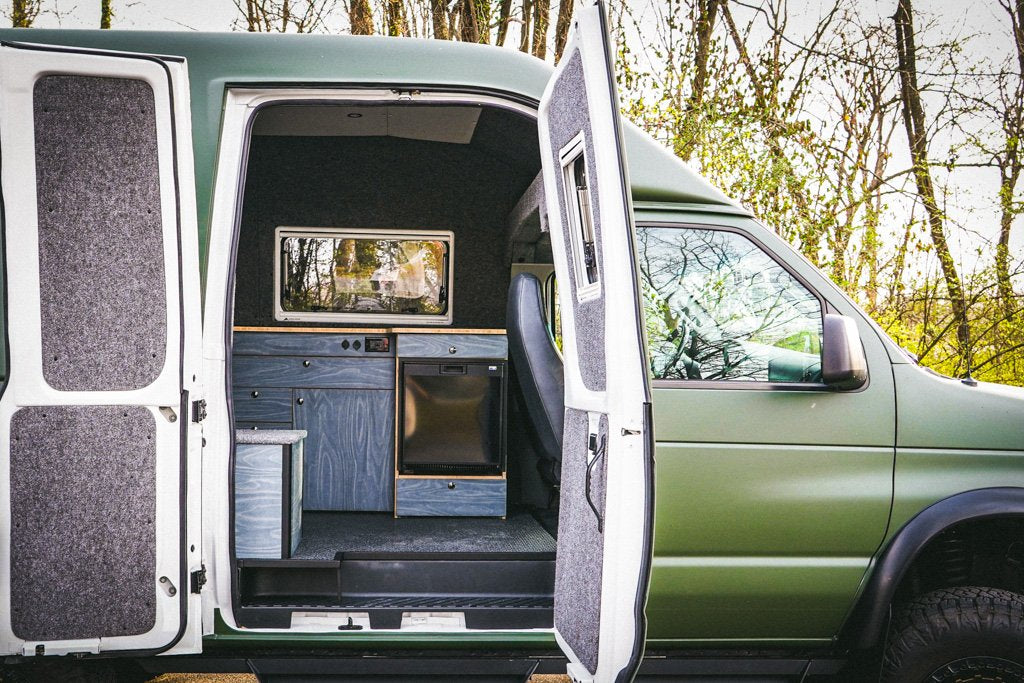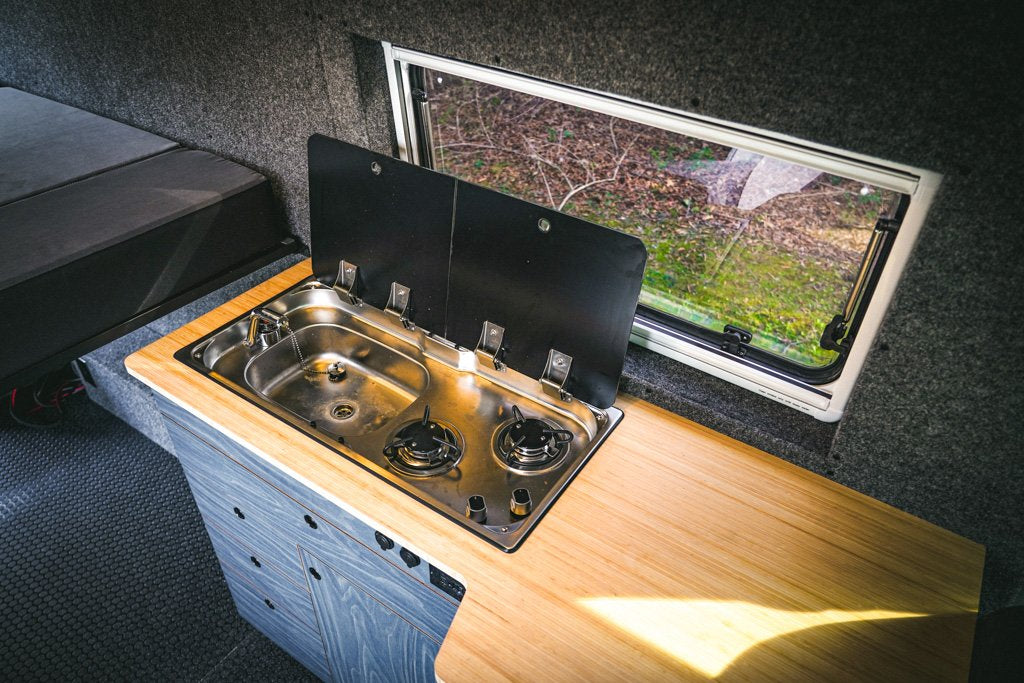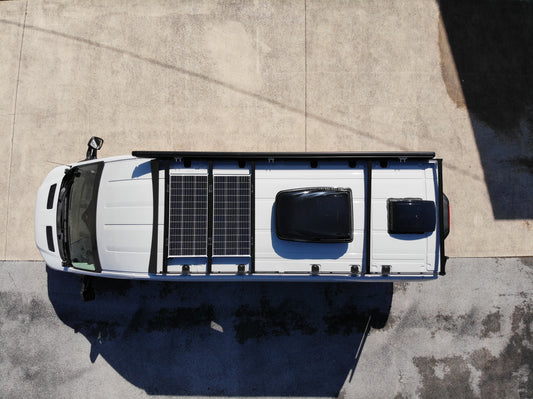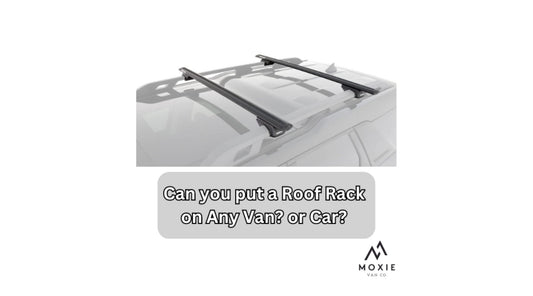As the days shorten and the temps drop, it’s important to prepare your campervan for winter. Whether you plan to spend the winter adventuring in your van or you prefer to hibernate until spring, follow these tips to ensure your campervan survives the winter without damage to key components.
Why Do I Need To Winterize My Campervan?
The most important reason to winterize your van is to prevent components from freezing. Frozen parts and water can cause broken water lines, loose fittings/connections, broken filters, and other damage to the water system in your van. It’s also important to keep your batteries charged up to extend their lifespan. Less sunlight hours and extreme temperatures are hard on batteries, regardless of the type or brand.
When Do I Need To Winterize My Campervan?
The best time to winterize your vehicle will depend on where you live. Any time the temperature drops below 40 degrees Fahrenheit your water system (faucet, shower sprayer, water lines, and water pump) can freeze. The last thing you want is to find that a quick drop in temperature has left you with a broken water system.
Winterize A Roaming Campervan
One of the many perks of owning a campervan is being able to travel and camp in the winter and stay warm. For us, winter camping offers peace, serenity and solitude unlike those crowded summer months. If you’re brave enough to keep roaming through those winter months, here are a few things you can do to make the season more enjoyable.
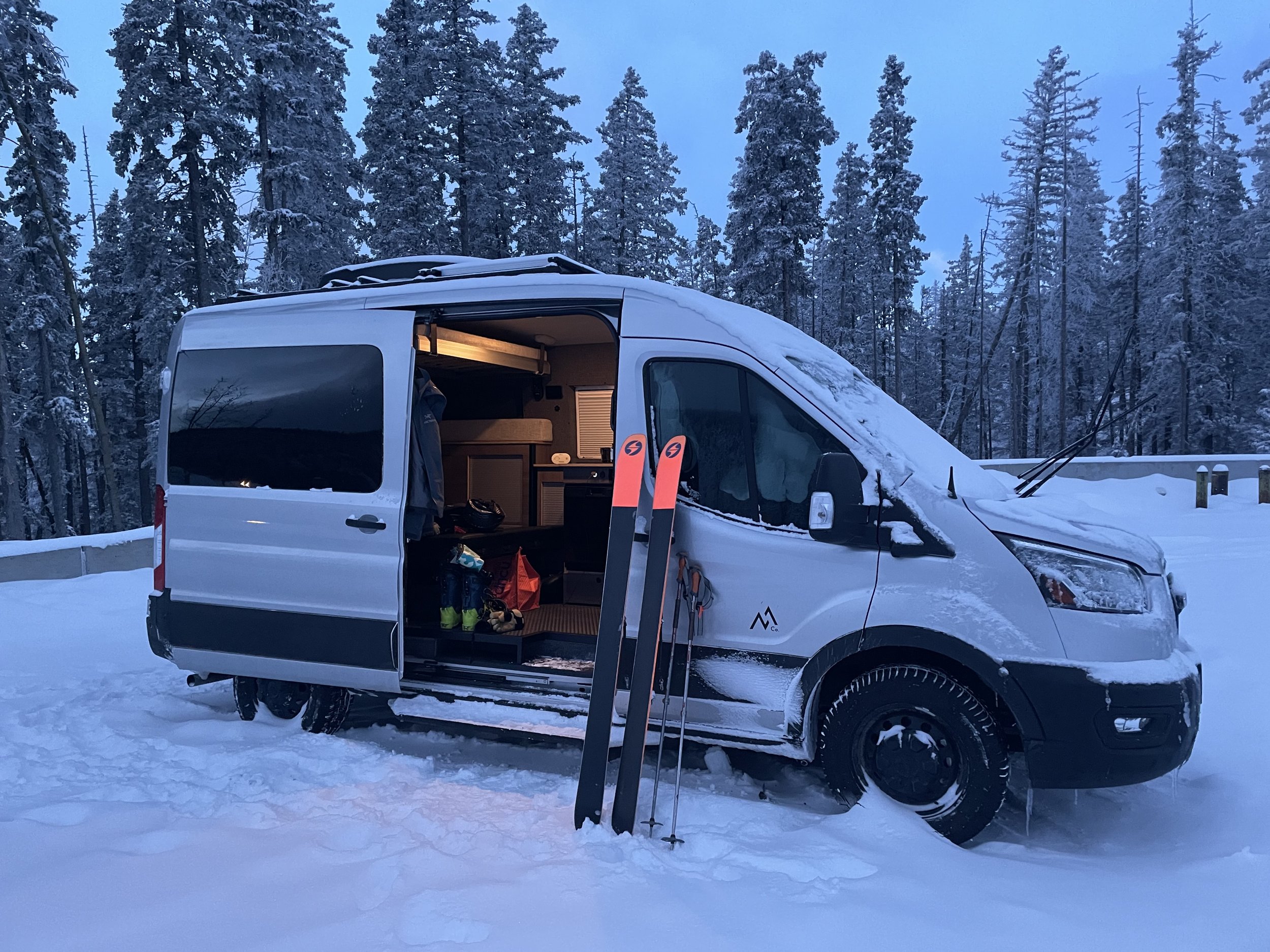
INSTALL/SERVICE A RELIABLE HEATER
If you’re a winter wanderer who plans to travel and sleep in your campervan, you will need a reliable secondary heater. Campervans are rolling metal boxes that quickly transfer the outside temperature so when it’s cold outside, it’s cold in the van unless you have a reliable heat source to combat that. Moxie Van Co. is an authorized dealer and service center for Webasto heaters. Whether you’re running a diesel or gasoline powered vehicle, we can professionally install or service the heater for you. Heater installs are one of our most popular service requests during the winter months.
INSULATION
Insulation is a big consideration when you’re building your van, but there are some things you can do post-build to help insulate your van when winter camping. One of those things is thermal insulated window covers. Cover up those glass panes to keep the cold out and the heat in. If you haven’t invested in quality insulated window covers yet, you can find a whole line up on Moxie’s website. Made locally in Chattanooga, TN, our window covers are designed to fit Ford Transit mid and high roof vans.
UPGRADE YOUR TIRES
All-weather or winter tires will make a huge difference on icy or snow-plowed roads. You can upgrade your tires when you purchase a campervan conversion from us or swap out your tires as the winter season approaches. A significant amount of weight is added to the back of the van during the conversion process, which helps stabilize rear-wheel drive vans in winter conditions, but you’ll still want to invest in all terrain tires if you plan to travel in icy or snowy conditions.
CARRY CHAINS
Although this is less common in the Southeast, in some places during the winter, chains are required for safety. If you're going to be driving over mountain passes where icy or snowy conditions exist, it’s a good idea to have chains on hand. Chains add extra traction and peace of mind.
CARRY AN EMERGENCY KIT
Having a well stocked emergency kit is a year round need, but can be a real lifesaver in the winter. Basic items include: Spare tire, lug nut wrench, jack, jumper cables, fuses, wrench set + screwdriver, engine oil, coolant, chains and traction mats. Have these simple things on hand to avoid getting stranded in the cold.
RUN THE AC/DEFROST
If you’re driving a modern campervan with AC/defrost, turn it on. It will help suck the moisture out of the van. For vintage campervans, we recommend using DampRid in the vehicle to help draw moisture out and prevent mildew.
RUN A DEHUMIDIFIER
This one’s a biggie for those living in climates that see a lot of rain in the winter—it’s something we highly recommend whether you’re winter camping or hibernating your vehicle. Running a dehumidifier overnight a couple times a month will help keep seats and upholstery dry and mold-free.
VENTILATE YOUR CAMPERVAN
Ventilation in your van is important no matter the time of year, but is often overlooked when you’re trying to keep as much heat in as possible in the winter. We recommend having some sort of outside air flow even when you’re winter camping. Even if you have a heater running, crack a window at night to help move moisture out of the van while you're sleeping; that’s when it has a tendency to build up. You’ll avoid waking up to foggy windows and damp seats.
BRUSH OFF YOUR AWNING BEFORE ROLLING
It’s a good idea to carry an ice scrapper with a brush for winter camping adventures. It comes in handy for removing ice and snow that’s built up on your windows and your awning overnight. You definitely don’t want to force rolling your awning up with snow or ice on it as it can cause damage. Unfortunately, de-ice or defrost solutions don’t work on the plastic-like material of an awning, so a little elbow grease and a brush is your best bet.
DRY YOUR CAMPERVAN AFTER EACH TRIP
With rain and snowy weather, water and moisture can lurk in places you can’t see. Be extra diligent about drying everything out after each camping trip to avoid mold and mildew from forming. If you have an awning or pop top, be sure to open these up and let things air out for a day or two.
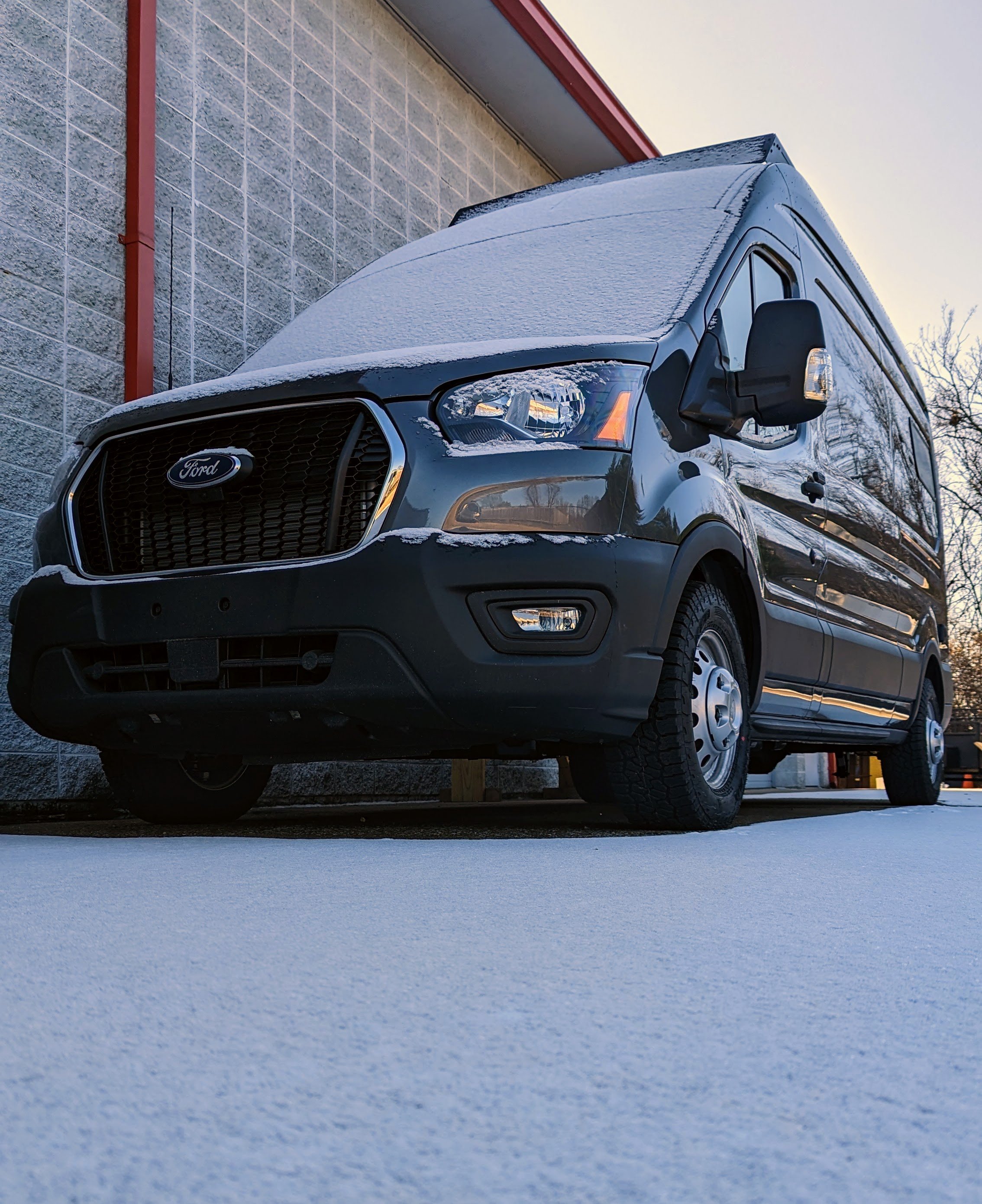
Winterize A Hibernating Campervan
There’s no shame in being a fair weather camper. If you plan to put the keys up during the winter months, it’s important to prep your vehicle for winter hibernation so when the weather warms back up, your campervan will be in prime shape for adventures again.
DEEP CLEAN YOUR CAMPERVAN
Mice and other critters are attracted to food odors so be sure to empty and clean out your fridge. Use an all-purpose cleaner to scrub the fridge, counters, cabinets, and floor—and make sure there’s no food scraps or residue left behind to entice them. It’s also best to leave the fridge door open so moisture doesn’t build up inside.
EMPTY YOUR WATER SYSTEM
Remove all of the water from your water system before your campervan settles in for its long winter nap. Keep the water line as dry as possible by opening up the tank. Exposing it to circulating air will provide ventilation and prevent mold and mildew from building up.
CLEAN THE EXTERIOR
While it’s crucial to make sure the inside of your campervan is clean, it’s also important to give the outside of the vehicle some extra attention. Your solar panels, pop top and awning all need a good cleaning. Pollen builds up over time and can cause things to stick. Make sure snow and debris isn’t left on the solar panels. And make sure there's no leaves stuck up in the awning; the tannins in decomposing leaves will stain the material.
TAKE CARE OF YOUR POP TOP
Throughout the year, pollen and other contaminants build up and may cause the pop top to stick as you try to open it, loosening the sealant in the process. We recommend completely wiping off the pop top seal 1-2 times a year to keep it functioning properly.
KEEP YOUR BATTERY CHARGED
Winter weather is hard on batteries, zapping the life from them and rendering them useless. Keep your campervan plugged in as much as possible when it’s not in use. If those auxiliary batteries sit in chilly temps for long periods, it can damage them. A charged battery is a happy battery!
Questions about winterizing your campervan?
Contact us at info@moxievanco.com
We’ve put together a handy checklist to help you winterize your camper van to ensure it survives the winter without damage to key components. Click the image to download.
